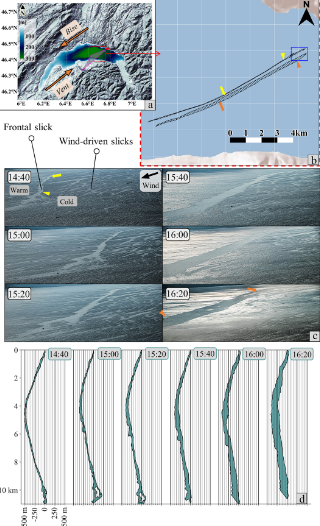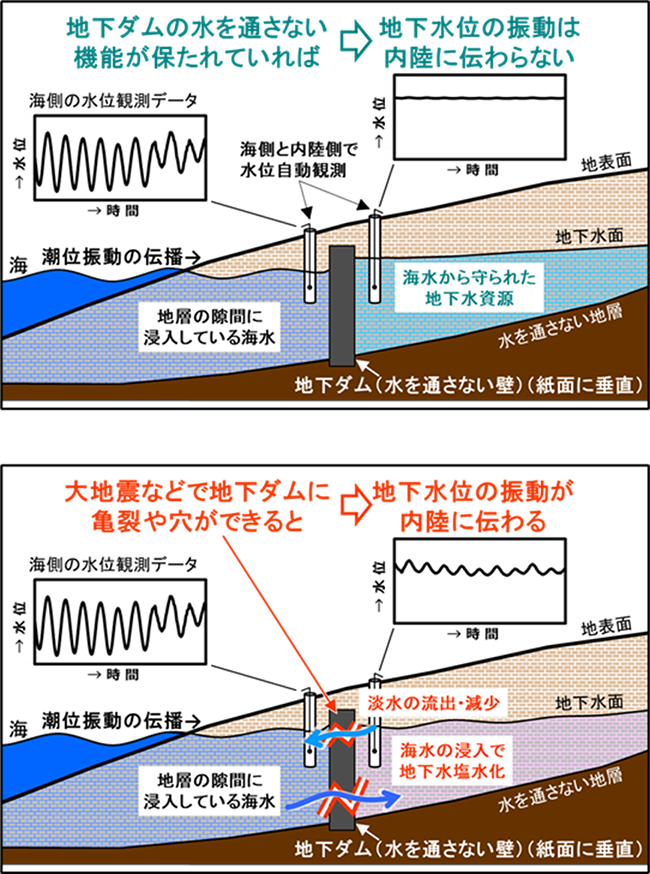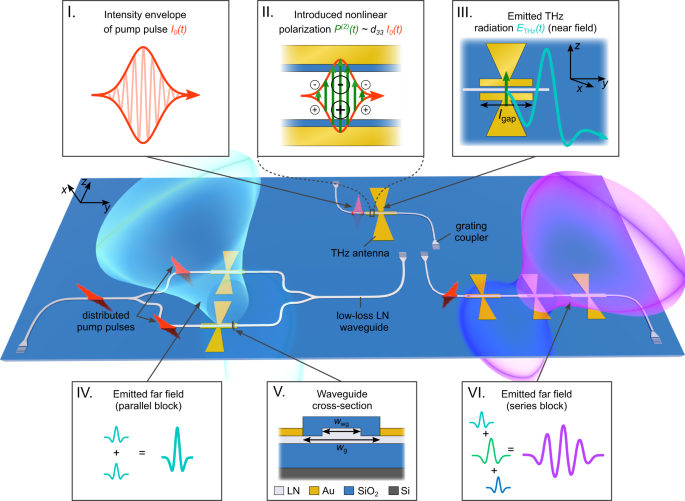EPFLの研究者は、スリック(滑らかな水の塊)が動く様子を初めて記録し、水面下で何が起きているのかを説明しました。 An EPFL researcher has, for the first time, documented slicks – those visually arresting, moving patches of smooth water – and explained what is happening beneath the surface.
2023-01-11 スイス連邦工科大学ローザンヌ校(EPFL)
ジュネーブ湖は水深309メートルで、ジャイルや渦といった、風によって引き起こされ、地球の自転に影響される流域規模の現象が見られます。また、強い風の発生は、沿岸湧昇と呼ばれる現象を引き起こし、湖岸の一部で深層から水面まで冷たい水が移動することがあります。これらの現象が複合的に作用することで、湖の流体力学に大きな影響を及ぼし、それが自然のスリックとして可視化されるのです。そこでフォロガンは、博士課程の一環として、これらのスリックから表層の水の流れに関する情報を得ることができるかどうかを調べることにした。
ECOLチームの測定は、自然のスリックが大きな湖の流体力学的特徴を捉えることができることを証明しました。この場合、大きなスリックは2つのジャイルの境界を示し、表面水の動きの複雑さを実証しています。「自然のスリックの形成と進化を記録することは、湖におけるいくつかの重要な物理過程の相互作用を示すものとして重要である。この情報は、水資源をより効果的に管理し、汚染物質がどこに隠れているかを突き止めるために利用することができます。「マイクロプラスチックのような汚染物質は、すでに大量のバイオサーファクタントを含む滑らかなスリックでより高い濃度で検出される傾向があります”。
<関連情報>
- https://actu.epfl.ch/news/scientists-delve-into-natural-slicks-on-lake-genev/
- https://agupubs.onlinelibrary.wiley.com/doi/10.1029/2022GL100262
サブメソスケールでの持続的な前線スリック。大規模湖(ジュネーブ湖)におけるメソスケール流れ場の新しいマーカー A Persistent Submesoscale Frontal Slick: A Novel Marker of the Mesoscale Flow Field in a Large Lake (Lake Geneva)
Mehrshad Foroughan, Seyed Mahmood Hamze-Ziabari, Ulrich Lemmin, David Andrew Barry
Geophysical Research Letters Published: 21 October 2022
DOI:https://doi.org/10.1029/2022GL100262

Abstract
Submesoscale fronts often become visible when the accumulation of biosurfactants in the water surface microlayer causes smooth surfaces, called frontal slicks, to develop. Based on in situ and remotely-sensed data, a frontal slick was documented for the first time in a lake (Lake Geneva). A quasi-stationary ∼10-km long slick formed on the warm side of a surface temperature front with strong horizontal velocity strain. The slick width increased from ∼50 to ∼200 m in ∼1.5 hr due to “feeding” by wind-driven, rapidly-moving smaller slicks. Numerical modeling results, confirmed by satellite data, indicated that the boundary between mesoscale gyres isolated warm surface water from cold water associated with wind-induced coastal upwelling. Measurements and modeling suggest that frontogenetic sharpening of the submesoscale temperature gradient created an active front with strong convergent flow. Such dynamics must be considered in buoyant material transport and the vertical exchange of surface water with deeper layers in lakes.
Key Points
- A submesoscale frontal slick is documented in a lake for the first time; it evolved on the warm side of a surface temperature front
- The temperature front was formed by mesoscale circulation that separated relatively warm surface water from colder upwelling-induced water
- The slick was 10-km long and its width increased by a factor of four in 1.5 hr due to “feeding” by wind-driven small-scale slicks
Plain Language Summary
Near-surface currents in lakes are affected by interactions of structures of different scales, such as gyres, eddies and coastal upwelling. These interactions can lead to the formation of fronts that are zones of convergence and downwelling, leaving floating materials to concentrate on the surface. Fronts are important because they can modify the lateral transport of surface material and the exchange between near-surface and deeper layers. Among the floating materials, biosurfactants create smooth surface areas (slicks) by suppressing capillary gravity waves, thus allowing visual detection of fronts in remote imaging. This study, carried out in Lake Geneva, documents for the first time the existence of a submesoscale (∼10 km) frontal slick in a lake. Three-dimensional numerical modeling and satellite imagery showed that due to the interaction of mesoscale gyres and eddies with coastal upwelling, a thermal front was generated in the area where the frontal slick was observed. In situ field measurements provided evidence that the observed slick was located on the warm side of the predicted thermal front. Since frontal slicks are easy to observe and track, they can provide valuable information about mesoscale dynamics in lakes, which at present are poorly understood.



